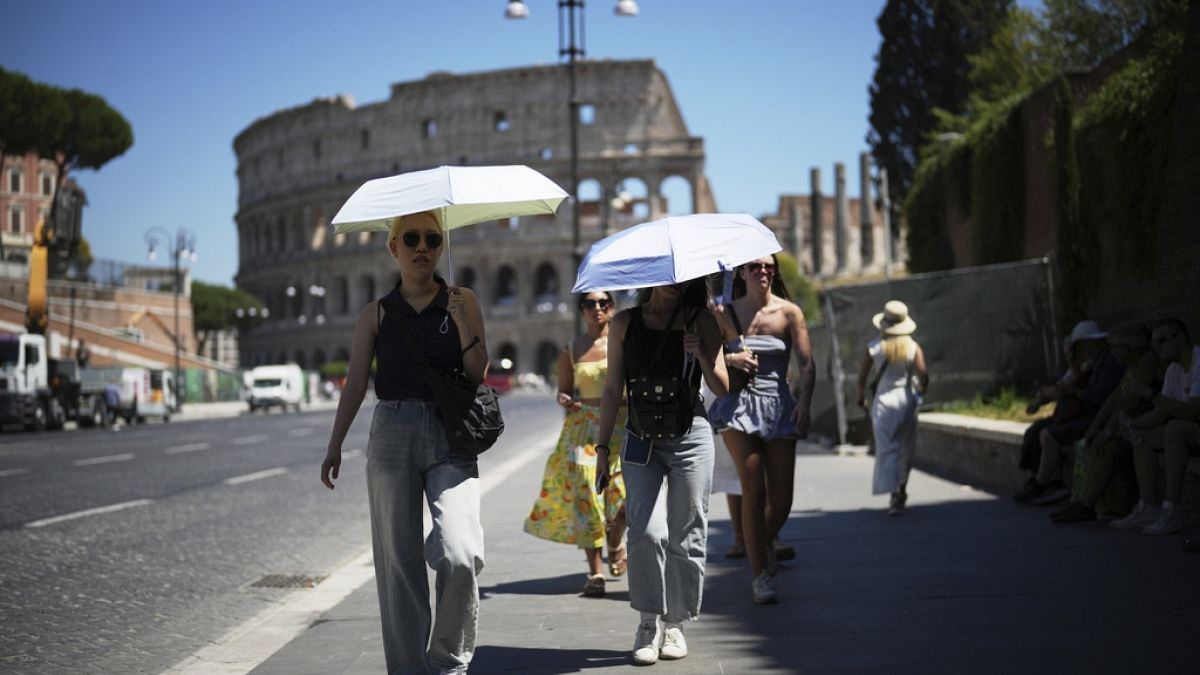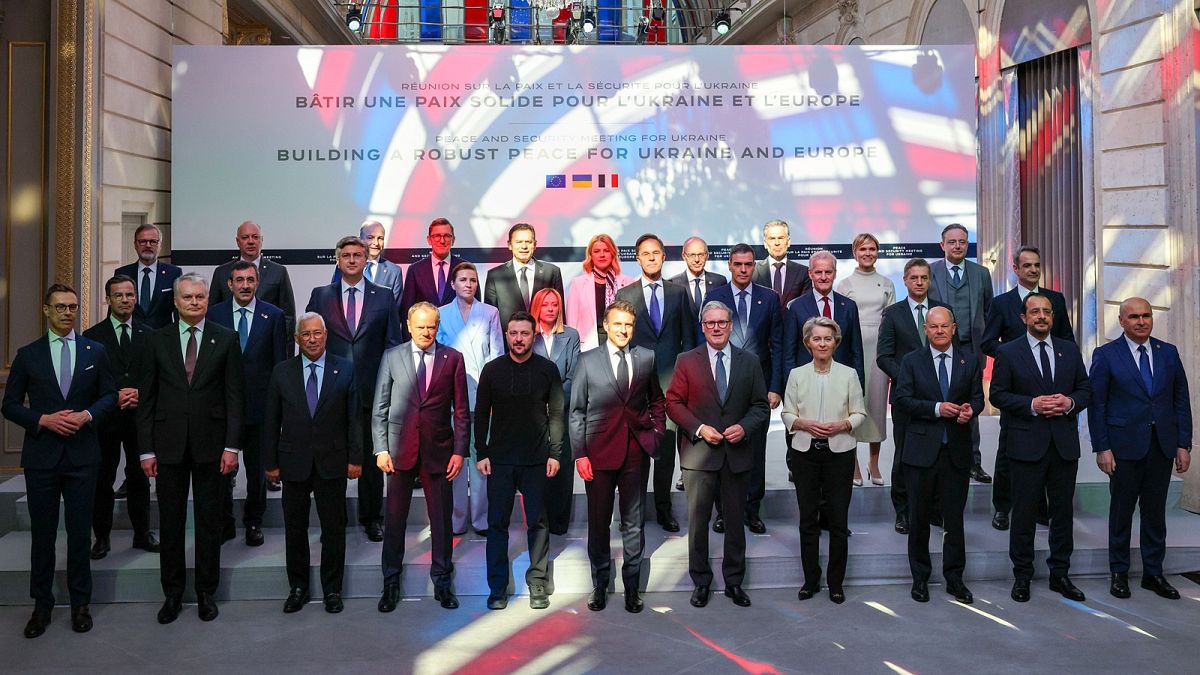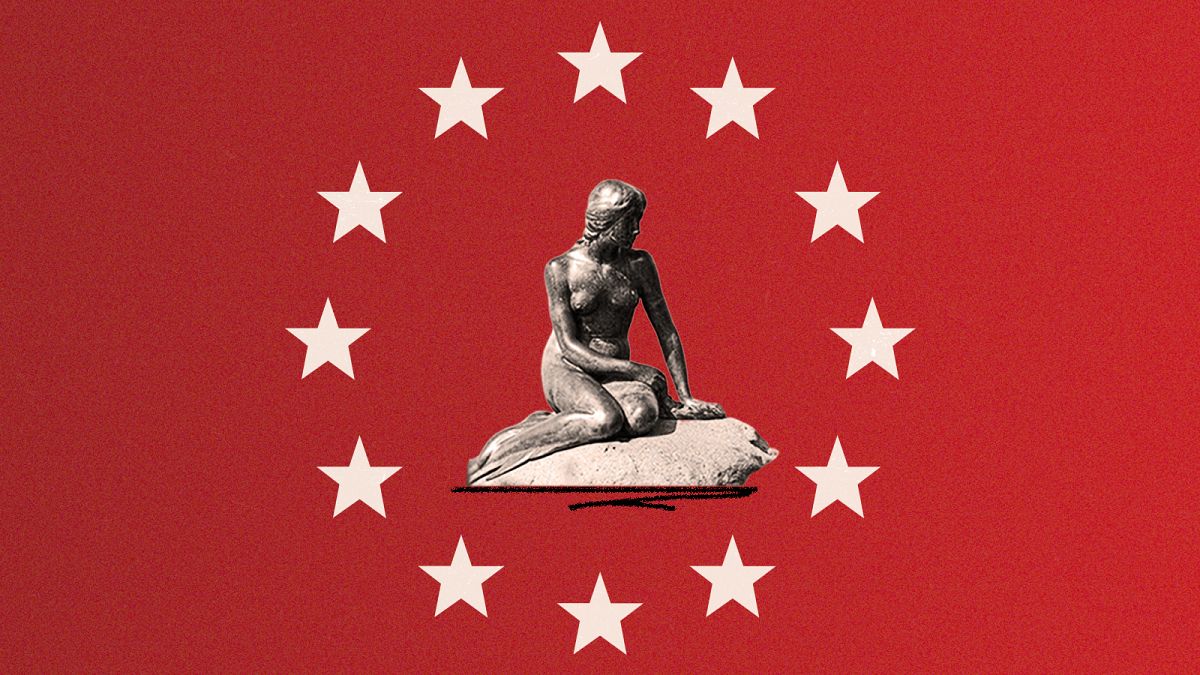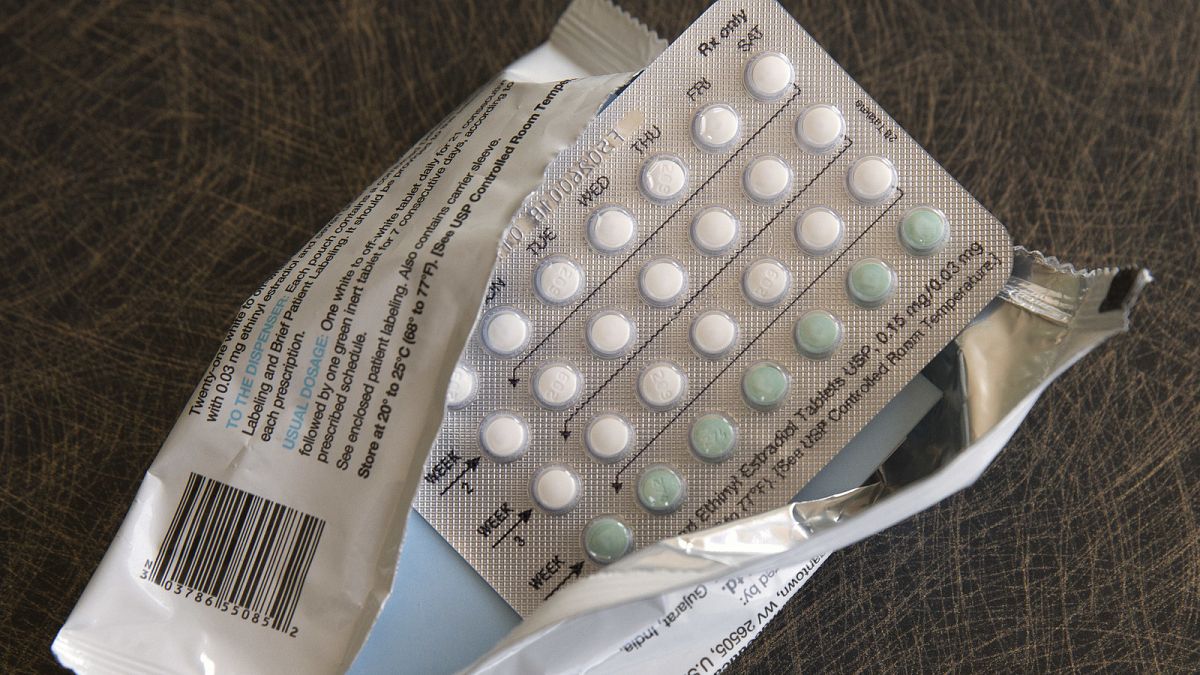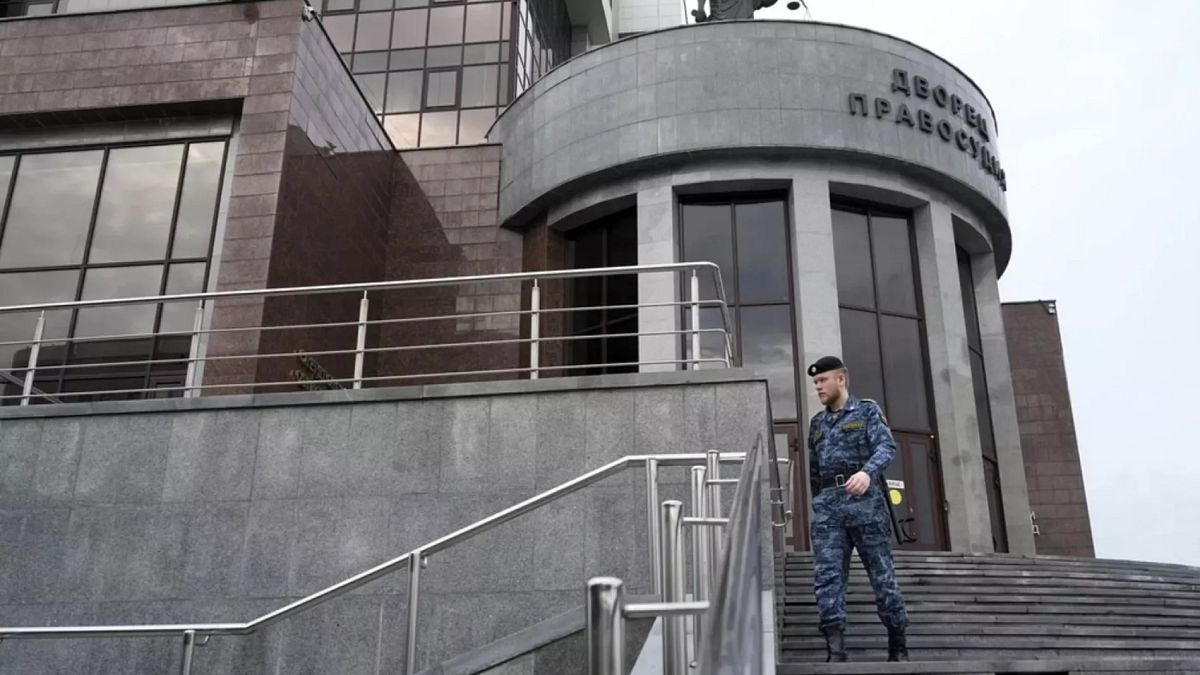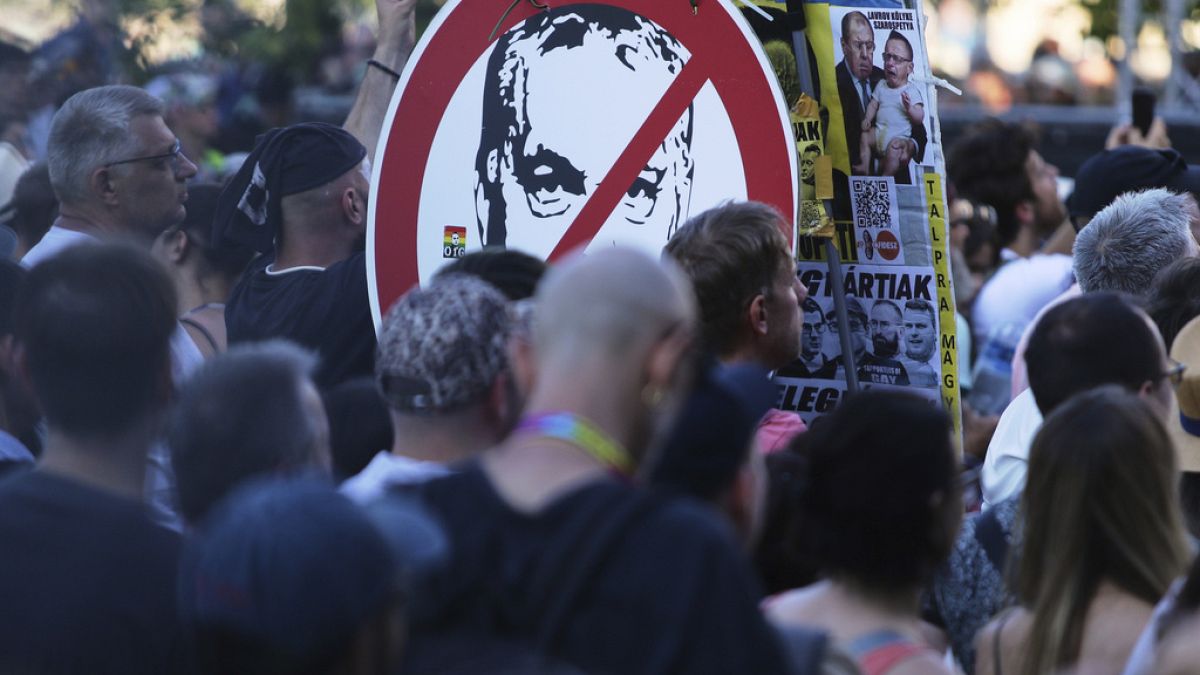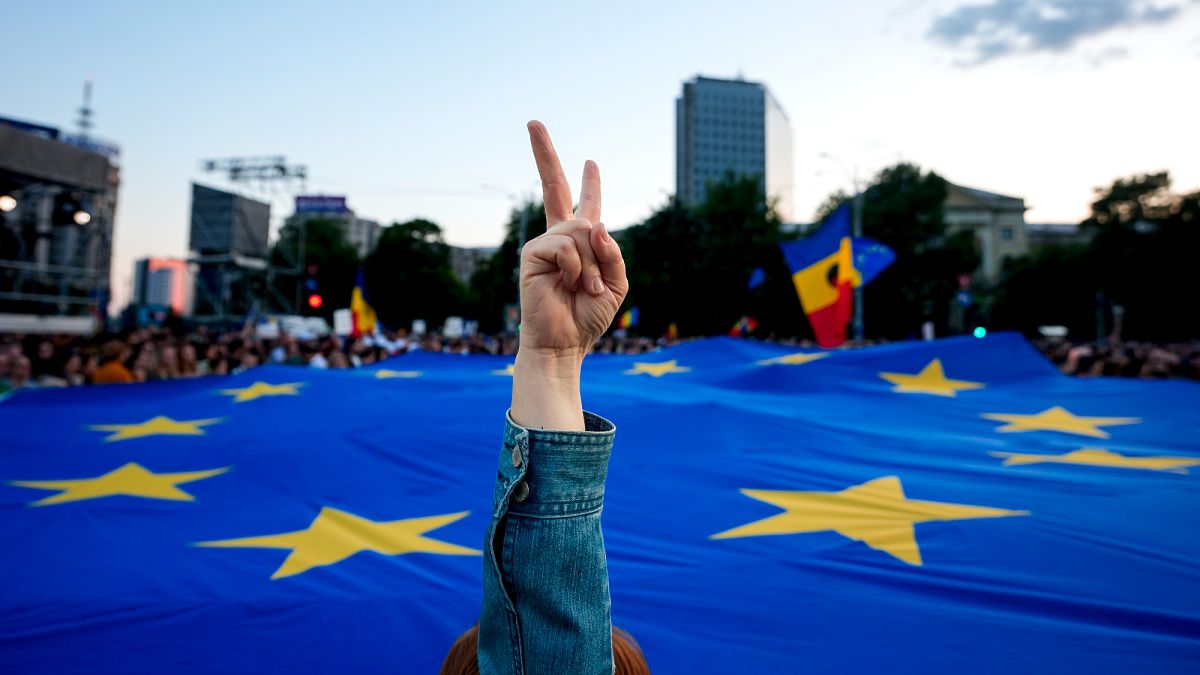“Europe, as a whole, has not been this strong and united for a very long time.”
This is how Keir Starmer, the prime minister of the United Kingdom, has described the diplomatic push to assemble a “Coalition of the Willing” to safeguard a potential deal to end Russia’s war on Ukraine, a task that took on sudden urgency after Donald Trump caught Europe off guard by unilaterally launching negotiations with Vladimir Putin.
Since that 90-minute phone call on 12 February, the continent has been trying to reassert its standing in the fast-moving chains of events to ensure its voice is heard and its interests are considered. Among them is the imperative need to guarantee Ukraine’s survival as an independent, sovereign nation and put the brakes on Putin’s expanionist agenda, which many fear will continue unchecked should his invasion prevail.
Doing so will require a peace deal that holds and lasts.
But Europe is deeply distrustful of Russia, having seen the country breach its commitments under the so-called Minsk agreements designed to end the Donbas war. This explains why this time, with the bloodiest conflict on its soil since World War II, Europe is coming together on a larger, bolder scale to prevent a repeat of the past.
“Our goal is clear: to secure peace,” French President Emmanuel Macron said last week after hosting a leaders’ summit in Paris. “To do this, we must put Ukraine in the best possible position to negotiate and ensure that the peace that is negotiated is solid and lasting for Ukrainians and all Europeans.”
Here’s everything we know so far about the “Coalition of the Willing.”
Who’s part of the coalition?
The seeds of the coalition were planted on 17 February, when Macron convened a small meeting of leaders in reaction to the Trump-Putin phone call. The hand-picked selection of guests suggested a new political format was about to emerge.
Less than two weeks later, on 2 March, as Europe was reeling from the disastrous encounter that President Volodymyr Zelenskyy had experienced in the Oval Office, Keir Starmer hosted a second meeting of leaders in London, with a longer list of attendants.
At the end of the closely watched deliberations, the prime minister publicly declared the birth of a “Coalition of the Willing”, co-led by Britain and France.
Last week’s summit in Paris further enlarged the number of participants.
Besides Macron, Starmer and Zelenskyy, the summit brought in leaders from Belgium, Bulgaria, Croatia, Cyprus, the Czech Republic, Denmark, Estonia, Finland, Germany, Greece, Iceland, Ireland, Italy, Latvia, Lithuania, Luxembourg, the Netherlands, Norway, Poland, Portugal, Romania, Slovenia, Spain and Sweden.
Turkey sent its vice president, Cevdet Yilmaz, while Australia and Canada were represented by their respective ambassadors in France.
Ursula von der Leyen, the president of the European Commission; António Costa, the president of the European Council; and Mark Rutte, the secretary general of NATO, were also present, adding a wider dimension to the talks.
In total, 33 delegations.
Starmer had previously mentioned Japan and New Zealand as part of the coalition, even if both nations did not attend the recent meeting in Paris.
Who’s not in the coalition?
It’s clear that the majority of the participants in the coalition are also members of the European Union, which Ukraine wishes to join one day.
There are, however, some eye-catching exceptions.
Malta and Austria have so far not joined the meetings due to their countries’ neutrality. By contrast, Ireland, which is also neutral, was present in Paris. “We’re willing to do whatever we possibly can to help,” Micheál Martin, the Taoiseach, said in March.
Hungary and Slovakia are the other EU countries that have not joined the coalition. They are not neutral – both are in fact NATO members – but strongly disagree over Europe’s approach to the war. Hungary and Slovakia oppose sending military assistance to Ukraine, which they depict as escalatory.
Viktor Orbán has taken his opposition to a new level and twice blocked joint EU conclusions on Ukraine, though Slovakia endorsed the text.
Switzerland, a long-standing neutral state, and the six Balkan countries have also remained outside the discussions.
What’s the coalition working on?
The “Coalition of the Willing” has established “three areas of work”, Macron explained at the end of the summit in Paris.
First, continued support for Ukraine’s Armed Forces, which Kyiv and Europe consider the first security guarantee to deter Russian aggression. The rapprochement of Washington and Moscow has already led to new pledges of military donations from European countries, with a focus on artillery, air defence systems, missiles, drones and training.
Second, the creation of a brand-new reassurance force that could be deployed on Ukrainian soil as an additional security guarantee.
Macron was quick to clarify the force would not act as a peacekeeping mission stationed along the front line. This task, he suggested, should fall onto the United Nations or the Organisation for Security and Co-operation in Europe (OSCE).
Instead, Macron said, the reassurance force will be based in “certain strategic locations” across the country, such as cities, ports and power plants, and act as a “deterrent” against Russia. Western troops could be potentially deployed on land, air and sea.
“Nothing is excluded at this time,” the French president told reporters.
By setting up this new force, the coalition will be “ready to operationalise a peace deal whenever its precise shape turns out to be,” Starmer said.
“This is a force designed to deter (and) send a message to Putin that this is a deal that is going to be defended,” he added. “That’s supposed to be the best description of it.”
The third area of work involves ramping up Europe’s own defence capabilities. The European Commission has proposed a new plan to mobilise up to €800 billion in fresh investments for defence, from which Ukraine is expected to benefit.
How many countries have committed troops?
The question of “boots on the ground” has loomed over the coalition since its first meeting. Today, it remains divisive despite the political traction it has gained.
So far, only France and the UK have officially committed to contribute soldiers as part of the reassurance force. France and the UK are the only European countries with nuclear weapons. Both are permanent members of the UN Security Council.
“There is no unanimity on this point,” Macron admitted. “Some states don’t have the capacity to do so, others don’t have the political context that allows them to do so.”
Other coalition members are expected to pledge troops as talks move forward.
Sweden, Denmark and Australia have publicly expressed their openness to consider sending their soldiers to Ukraine as part of an international mission. More recently, Belgium said it would be “logical” to participate “if Europe decides to do it.”
By contrast, Poland and Greece, two of Europe’s biggest defence spenders, have already said they would not put boots on the ground due to the threats they face from their neighbourhood (Belarus in the case of Poland, Turkey in the case of Greece).
Italian Prime Minister Giorgia Meloni has also rejected the possibility, casting doubt over the “effectiveness” of the Franco-British proposal.
“In my opinion, it is very difficult to implement,” she said last month.
Meanwhile, Russia has repeatedly protested against any plan that will see the establishment of Western troops inside Ukraine. But these complaints will have no bearing on the coalition’s deliberations, Macron and Starmer have said.
“It is not Russia that will choose what happens on Ukrainian territory,” Macron said.
“We know what Russia wants. It wants a defenceless Ukraine,” Starmer said.
Will the US be involved in any way?
As things stand, the US is not a member of the “Coalition of the Willing.” In fact, the main reason why the coalition exists in the first place is because Trump broke the three-year united front among allies and went his own way to launch negotiations with Putin.
However, the group still hopes the US might become involved at one point in the process and provide some assistance to the reassurance force, such as air protection or intelligence sharing. This will likely motivate more nations to commit more troops.
This is the so-called “US backstop” that Starmer has referred to several times.
“As I’ve always said, this will require the engagement and support of the United States,” Starmer said. “That’s a discussion we’ve had with the US president on many occasions.”
The British and French leaders have been in regular contact with Trump to keep him updated about the progress made by the coalition. They depict their work as being in Europe’s and America’s interest, as it will safeguard the peace deal that Trump is after.
Despite the many diplomatic overtures, including visits to the White House, there has been no indication that the US would supply the famous “backstop”. If anything, the Trump administration has suggested a gradual reduction of American troops in Europe.
“There is a lack of clarity on the nature of American commitments for the day after,” Macron said. “We must hope for the best but prepare for the worst.”
What’s next for the coalition?
Following high-level summits in Paris and London that enlarged its membership, the coalition is focused on fleshing out the details of the reassurance force. President Zelenskyy has invited military representatives to visit Ukraine and begin technical discussions to concretise the abstract project.
“We need clear, operational decisions – and a shared vision for the future security system,” he told leaders last week.
According to Zelenskyy, the questions that need to be answered include: Which countries will deploy soldiers on land, air and sea? Where exactly will these soldiers be located? How big will the reassurance force be? What structure will it have? How will the force respond in case of a threat from Russia?
Zelenskyy put another question on the table: “When will our coalition actually deploy forces in Ukraine: when a ceasefire begins or once the war is fully over and a settlement is reached?”
The outcome of this work is expected to be presented to leaders in an upcoming summit, although no date has yet been announced. According to AFP, the coalition’s defence ministers are set to meet on 10 April in Brussels.




